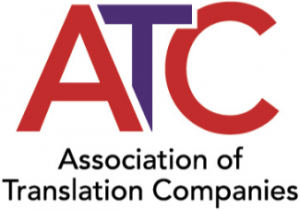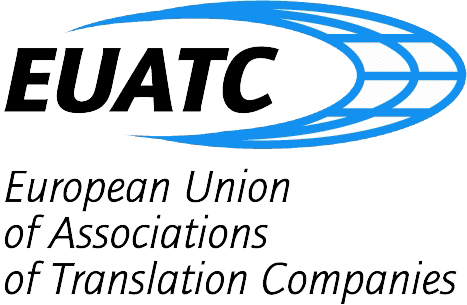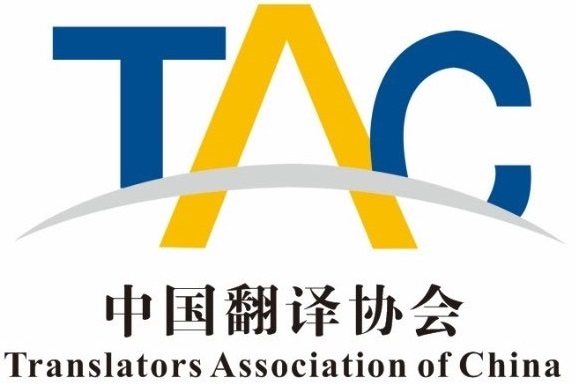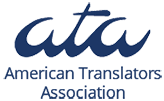We work hard at CTS to ensure our service will exceed your expectations.
We strive to provide you with high quality and hassle-free translation and interpreting services.
CTS offers a wide range of language services to support your business operations. We aim to exceed your expectations on all of our services, on every occasion.
Chinese interpreting services for your face-to-face meetings and phone and video calls.
Professional Chinese translations of your documents, websites, software, and videos.
We'll create subtitles as funny or informational as the original programme.
Our first project was to translate a single-page leaflet for 10 GBP. Since then, over 18,000 businesses and private individuals have used our Chinese translation and interpreting services.
Words translated since 1998
Minutes transcribed since 2011
Minutes subtitled since 2014
Projects completed since 1998
As a leading Chinese translation company, we are well-positioned to support your business communications in Mandarin and Cantonese. Our presence in the UK and China gives us a deep understanding of both markets, and it shows in the translations we produce.
We deliver effective Chinese translations that resonate strongly in your target market.
Our office in London is supported by our teams in Shanghai, Hong Kong, New York, and Sydney.
We donate to panda conservation projects in China, supporting a wide variety of initiatives.
We utilize cutting-edge technology to eliminate errors and improve accuracy.
We have provided clients with Chinese translation services for over two decades.
Our certified translations fulfil the requirements and specifications set by the UK government.
CTS is a leading provider of Chinese translation services in the UK. Our mission is to help British and Chinese companies succeed in each other’s markets through our professional Mandarin and Cantonese translations.
Here, we share our knowledge and insights on the Chinese language and culture, as well as a few translation and localisation tips to ensure your project is a success.
The red wavy line under a typo in Microsoft Word is an iconic feature; however, it is not a functionality that is useful for Chinese users. This is because Microsoft Word and other word-processing software cannot accurately detect typing errors in Chinese. Worst yet, there is nothing commercially available that can solve this problem. The only way to eliminate typos is to proofread the Chinese document word-for-word.
A page of English text contracts by 25% in volume once translated into Chinese. Expanded or contracted text can affect the layout and appearance of your website, book, or magazine, so it is important to work with a Chinese translation agency that can format your documents post-translation.
At CTS, we do not recommend using machine translations on work-related documents due to the high risk of mistranslation. We believe that machine translations are still unable to produce high-quality translations between English and Chinese. This is despite the recent breakthroughs in artificial intelligence, machine learning, and neural networks.
An effective localisation should take into account cultural preferences in colours, symbols, numbers, and societal norms and beliefs. For example, consider the phrase, “Stocks are in the red, is it time to sell?”. The colour red means danger in Western society, but it also represents luck in Chinese culture. A good translator will make it clear in the translation that the stocks are falling.
When it comes to large numbers, the Chinese count in units of ten thousand, called Wàn. For example, one hundred thousand is localised as ten Wàn, and one million is localised as one hundred Wàn. As you can imagine, it is easy to make errors when converting numbers from English to Chinese.
When localising your documents into Chinese, it is important to convert the currency to RMB or CNY. China’s official currency is the Renminbi (RMB), and the Chinese Yuan (CNY) is the unit of measurement. Both the Renminbi and the Yuan are often used interchangeably.
One of the most common questions we receive from clients is whether they should translate their documents into Mandarin or Cantonese, which is technically incorrect because Mandarin and Cantonese are spoken languages. The written forms of Chinese are Simplified Chinese and Traditional Chinese.
Between 1950 to 1960, the government of China promoted the use of a simplified version of Chinese characters to boost literacy. As the name implies, Simplified Chinese is written with fewer strokes, making it easier to write when compared to Traditional Chinese.
The introduction of Simplified Chinese characters faced strong resistance from the public and academics. Since then, Simplified Chinese has been officially used in Mainland China, Malaysia, and Singapore. Hong Kong, Macau, and Taiwan have continued to use Traditional Chinese characters.
Generally speaking, Chinese people can read both Simplified and Traditional Chinese. However, many expressions and terminologies are used differently, so selecting the correct variant when translating your documents into Chinese is important.
Contrary to popular belief, Chinese is not a single language but a group of languages spoken by the ethnic Han Chinese majority and other Chinese minority ethnic groups.
It is estimated that there are seven to thirteen significant groups of Chinese languages, each of which has its variations and dialects. Mandarin, as the official language of China, is the most widely spoken, with approximately 800 million speakers. This is followed by Min, Wu (Shanghainese), and Yue (Cantonese), with 75 million, 74 million, and 68 million speakers, respectively.
Unsurprisingly, the most significant and noticeable difference is the writing system. While English uses alphabets to help readers pronounce words, Chinese uses written symbols called Hànzì that cannot be sounded out. However, Chinese characters have components called radicals which can sometimes give advanced readers a rough idea of their meaning.
Chinese is a tonal language. This means that it uses pitch to distinguish word choice. In English, changes in pitch are used to emphasize or express emotion, but in Chinese, pitch represents meaning. Mandarin has four basic tones, and Cantonese has nine basic tones.
Using long sentences in English to express ideas is common since it adds flair, rhythm, and poetic power to writing. On the other hand, Chinese does not depend on sentence structure for expression. Instead, it divides long sentences into shorter phrases separated by commas, leaving the use of Chéngyǔ (four-character idiomatic expressions) to bring life to the language.
Below are some of the most commonly searched phrases in English and their Chinese translations.
| English | Simplified Chinese Translation | Pinyin (Romanized Spelling) |
|---|---|---|
| Hello | 你好 | Nǐ hǎo |
| Thank you | 谢谢 | Xièxiè |
| Goodbye | 再见 | Zàijiàn |
| Good morning | 早上好 | Zǎoshang hǎo |
| I love you | 我爱你 | Wǒ ài nǐ |
| I miss you | 我想你 | Wǒ xiǎng nǐ |
| Good luck | 祝你好运 | Zhù nǐ hǎo yùn |
| Happy New Year | 新年快乐 | Xīnnián kuàilè |
| Happy birthday | 生日快乐 | Shēngrì kuàilè |
A word you may often hear when doing business in China is “guanxi”. Many agree that this roughly means “relationships”, but a more literal translation is “to go through the back door”. It is an exchange of personal or business favour through relationships. Often misunderstood by Western counterparts as unethical behaviour or corruption, it is a core part of doing business in China which can often help open doors.
When it comes to doing business in China, it is important to understand the political views of the Chinese people. While it is acceptable in the UK and other parts of the world to openly challenge or criticise the government, the Chinese do not feel comfortable doing the same. In general, topics that are off-limits include China’s territorial borders, Tibet and the Dalai Lama, Xinjiang, Tiananmen Square, Taiwan, Chairman Mao, and the Cultural Revolution.
Mianzi in Chinese culture is a metaphorical expression of preventing a loss of face. The Chinese will go to great lengths to save face, even if it means telling an outright lie, denial, or feigning ignorance. In a business setting, both parties are expected to read between the lines instead of criticising or challenging the other party.
We started as specialists in Chinese translations, but it wasn’t long until clients began asking for more languages. Click "learn more" for the complete list of languages we translate.
CTS is accredited and certified by professional translation associations in the UK, EU, USA, and China. We are committed to fair business practices and comply with a code of professional conduct.




Our clients praise us for our accurate translations, personable service, and on-time delivery.
Here are some of the amazing things they have said about working with us.
CTS stands for Chinese translation services. We are a UK-based Chinese translation company with two decades of experience providing English and Chinese translations of documents, websites, software, and videos for private businesses and public sector organisations.
Yes. We started as specialists in Chinese translations, but we now provide translations for all the major languages, including French, Spanish, Italian, German, Russian, Japanese, Korean, and of course, Chinese!
We charge on a per-word or per-page basis because it is the fairest and most accurate way to calculate fees. After receiving and checking your documents, our team will send you an exact quote and delivery date. We’re fully transparent in our pricing, there are no surprises, and all costs are included and upfront.
The answer depends on which market the translations will be used in. If your audience is in Mainland China, Malaysia or Singapore, your documents will need to be translated into Simplified Chinese. On the other hand, if your audience is in Hong Kong, Taiwan, or Macau, your documents should be translated into Traditional Chinese.
When it comes to doing business in China, building good relationships, or “guanxi”, is key. Furthermore, China’s “face” culture is incredibly unique, understanding what it is and how to deal with it will greatly improve your chances of success. Additionally, the Chinese people are huge believers in creating win-win situations. Therefore, an agreement that can give both sides a win would be extremely favourable.
Translation is the process of accurately converting written text from one language into another. Localisation is the process of adapting a translated text so that it is linguistically and culturally appropriate for its target market. Interpretation is the process of translating spoken words.
Certified translation, or ‘official’ translation, is a document that has been signed, stamped, and dated by a translator to state that it is a true representation of the original text. Generally speaking, a document used for an official purpose that is not in the language of the intended country will require a certified translation.
Before sending a document for translation, make sure it is the final version. There have been many occasions where a client needed to revise the original copy during the translation process, which caused delays to the project and increased costs. Furthermore, if you have preferred terminology or would like us to follow a glossary and style guide, please send it to us before the project begins.